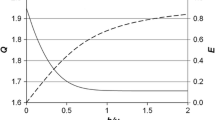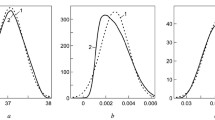Abstract
Consistent treatment of measurement bias, including the question of whether or not to correct for bias, is essential for the comparability of measurement results. The case for correcting for bias is discussed, and it is shown that instances in which bias is known or suspected, but in which a specific correction cannot be justified, are comparatively common. The ISO Guide to the Expression of Uncertainty in Measurement does not provide well for this situation. It is concluded that there is a need for guidance on handling cases of uncorrected bias. Several different published approaches to the treatment of uncorrected bias and its uncertainty are critically reviewed with regard to coverage probability and simplicity of execution. On the basis of current studies, and taking into account testing laboratory needs for a simple and consistent approach with a symmetric uncertainty interval, we conclude that for most cases with large degrees of freedom, linear addition of a bias term adjusted for exact coverage (“Ue”) as described by Synek is to be preferred. This approach does, however, become more complex if degrees of freedom are low. For modest bias and low degrees of freedom, summation of bias, bias uncertainty and observed value uncertainty in quadrature (“RSSu”) provides a similar interval and is simpler to adapt to reduced degrees of freedom, at the cost of a more restricted range of application if accurate coverage is desired.


Similar content being viewed by others
Notes
“Empirical”: a correction determined solely from experimental observations, without underlying theoretical basis. Empirical corrections may be as simple as the application of a ‘recovery factor’.
References
Hund E, Luc Massart D, Smeyers-Verbeke J (2001) TRAC 20(8):394–406
Thompson M (2000) Analyst 11:2020–2025
Hasselbarth W (2004) Accred Qual Assur 9:509–514
Lira IH, Wögler W (1998) Meas Sci Technol 9:1010–1011
BIPM, IEC, IFCC, ILAC, ISO, IUPAC, IUPAP, OIML: Guide to the expression of uncertainty in measurement (1993) ISO, Geneva
Menditto A, Patriarca M, Magnusson B (2007) Accred Qual Assur 12:45–47
ISO Guide 99 International vocabulary of metrology-basic and general concepts and associated terms VIM 3rd edn (2007) ISO, Geneva
Thompson M, Ellison SLR (2005) Accred Qual Assur 10:82T
Thompson M, Ellison SLR, Fajgeli A, Willetts P, Wood R (1999) Pure Appl Chem 71:337–348
Barwick VJ, Ellison SLR (1999) Analyst 124:981–990
Ellison SLR, Barwick VJ, Norris P, Griffiths M (2003) Analyst 128:493–498
Dybkaer R (2005) Accred Qual Assur 10:302–303
Magnusson B, Naykki T, Hovind H, Krysell M (2003) Handbook for calculation of measurement uncertainty. NORDTEST report TR 537 Internet version 2003. Can be obtained from http://www.nordicinnovation.net/nordtest.cfm under link Rapporter. Cited June 2007
EN 10315 (2006) Routine method for analysis of high alloy steel by X-ray fluorescence spectrometry (XRF) by using a near by technique
Kallner A, Khorovskaya L, Petterson T (2005) Scand J Clin Lab Invest 65:551–558
Commission Regulations (EC) 333–2007, Laying down the method of sampling and analysis for the official control of the levels of lead, cadmium, mercury, inorganic tin, 3-MPCD, benzo(a)pyrene in food stuff
Synek V (2005) Talanta 65:829–837
O’Donnell GE, Hibbert DB (2005) Analyst 130:721–729
Maroto A, Boqué R, Riu J, Rius X (2002) Accred Qual Assur 7:90–94
Phillips SD, Eberhardt KR, Parry B (1997) J Res Nat Inst Stand Technol 102:577–585
Franson MAH (1989) American Public Health Association. Standard methods for examination of water and wastewater, Washington DC
Eurachem/Citac guide (2000) Quantifying uncertainty in analytical measurement, 2nd edn. http://www.eurachem.org (Cited June 2007)
Acknowledgement
The authors thank Marina Patriarca, ISS, Italy and Ivo Leito, Tartu University, Estonia and Elvar Theodorsson, University Hospital of Linköping, Sweden for stimulating and valuable discussions and contributions.
Author information
Authors and Affiliations
Corresponding author
Rights and permissions
About this article
Cite this article
Magnusson, B., Ellison, S.L.R. Treatment of uncorrected measurement bias in uncertainty estimation for chemical measurements. Anal Bioanal Chem 390, 201–213 (2008). https://doi.org/10.1007/s00216-007-1693-1
Received:
Revised:
Accepted:
Published:
Issue Date:
DOI: https://doi.org/10.1007/s00216-007-1693-1




